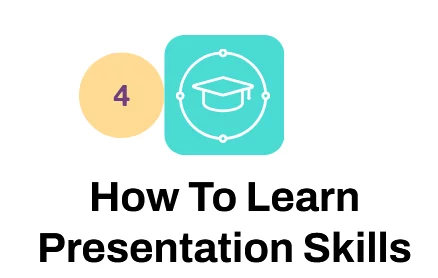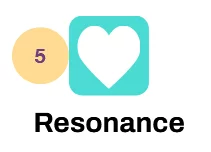
Handling Q&As with Poise and Precision
Contents
Even the most polished presentation can unravel with a single tough question, unless you’re ready for it.
Mastering the Q&A is more than just fielding questions.
It’s about maintaining your composure, reinforcing your message, and turning potential tension into credibility.
From boardrooms to conference stages, I’ve faced my share of challenging questions.
Here’s what I’ve learned about handling them with grace.
Handling The Q&A – Learn From A Pro
I’ve coached hundreds of professionals through tough Q&A sessions, and I’ve been in the hot seat myself more times than I can count.
What I’ve learned is that the people who handle questions best don’t wing it.
They treat the Q&A like part of their presentation, not a separate event.
In both my own talks and our training sessions, I focus on five strategies that make a huge difference:
Reframing the Q&A, pausing before you speak, validating and redirecting tough questions, staying calm under pressure, and using a structured response.
These aren’t tricks — they’re tools. And once you start using them, you’ll find the Q&A isn’t something to dread. It’s where your authority really shines.
1. Reframe The Q&A
The biggest mistake many presenters make is treating the Q&A as an afterthought.
When that happens, they finish strong and then unravel during questioning.
Instead, view Q&A as a continuation of your presentation.
Make it a chance to reinforce your credibility, show your command of the subject, and directly engage with the audience.
Framing it this way helps you keep control of the room and wrap up on your own terms.
Why It Matters:
Treating Q&A as an afterthought weakens your close.
Framing it as a strategic part of your talk keeps you in control.
How To Integrate It:
-
Preview the Q&A early: “I’ll leave time for your questions at the end.”
-
Save a strong message for your final close after Q&A.
-
See questions as opportunities to deepen engagement.
2. Pause Before You Respond
When you’re hit with a tough or unexpected question, it’s easy to rush into a reply out of anxiety or pressure.
But reacting too quickly can lead to defensiveness or poorly framed answers.
A brief pause – just a breath – gives you a moment to think clearly and respond intentionally.
It also signals confidence and composure to your audience.
Why It Matters:
Rushing to respond can lead to defensiveness or missteps.
What To Do:
-
Take a breath. It shows confidence and gives you thinking space.
-
Clarify the question if needed.
-
Respond with intent, not impulse.
-
Field tip: I once repeated a complex question aloud before answering—just that pause helped me reframe it calmly.
3. Validate, Then Redirect
Not every question will be fair, or even relevant.
But even difficult or off-topic questions deserve respect.
Acknowledging the person’s perspective can defuse tension and earn goodwill.
Once validated, you can steer the conversation back to your core message, ensuring the audience stays focused on what truly matters.
Why It Matters:
Acknowledging a question shows respect, even if it’s off-topic or adversarial.
Technique:
-
Say, “That’s a fair question,” or “I can see why you’d ask that.”
-
Then bridge to your message: “What I’d highlight in that context is…”
-
Redirect to the most relevant takeaway for the audience.
4. Separate Emotion From Logic
Challenging questions can feel personal, especially if someone is frustrated or combative.
But reacting emotionally only fuels the fire.
Instead, focus on the content – not the delivery – and respond with calm, measured logic.
Lowering your voice or softening your tone can reduce tension and demonstrate emotional intelligence.
Why It Matters:
Difficult questions can feel like attacks.
Your response should reflect poise, not pressure.
How To Stay Grounded:
-
Focus on the content, not the tone.
-
Lower your voice slightly if the questioner raises theirs.
-
Remain solution-focused.
-
From experience: Diffusing emotion with calm logic has often turned skeptics into supporters.
5. Use a Response Framework
Tough questions can put you on the spot, but a framework helps you stay focused and clear.
Structured answers sound more confident and keep your response aligned with your message.
Think of it as a mini-presentation: validate, respond, then reinforce your key message.
It’s not about sounding rehearsed, it’s about staying intentional.
Why It Matters:
Structured answers help you stay concise and persuasive (Authoritativeness).
Try This Approach:
-
Acknowledge the question.
-
Answer directly.
-
Bridge to a key message.
-
Conclude with a call to thought or action.
-
Example: “Yes, that’s a valid concern. Here’s what we’ve seen in similar situations… That’s why we’ve focused on X, and here’s what you might consider going forward.”
Final Thoughts
Difficult questions aren’t detours, they’re part of the journey.
When you approach them with poise, structure, and clarity, you turn challenges into chances to build credibility and connect.
With the right mindset and techniques, you’ll not only survive the Q&A: you’ll lead it.
Still feeling nervous about the Q&A? Check out our presentation skills training, and get a professional to help you through it step by step.
- Facebook: https://www.facebook.com/profile.php?id=100066814899655
- X (Twitter): https://twitter.com/AcuityTraining
- LinkedIn: https://www.linkedin.com/company/acuity-training/







